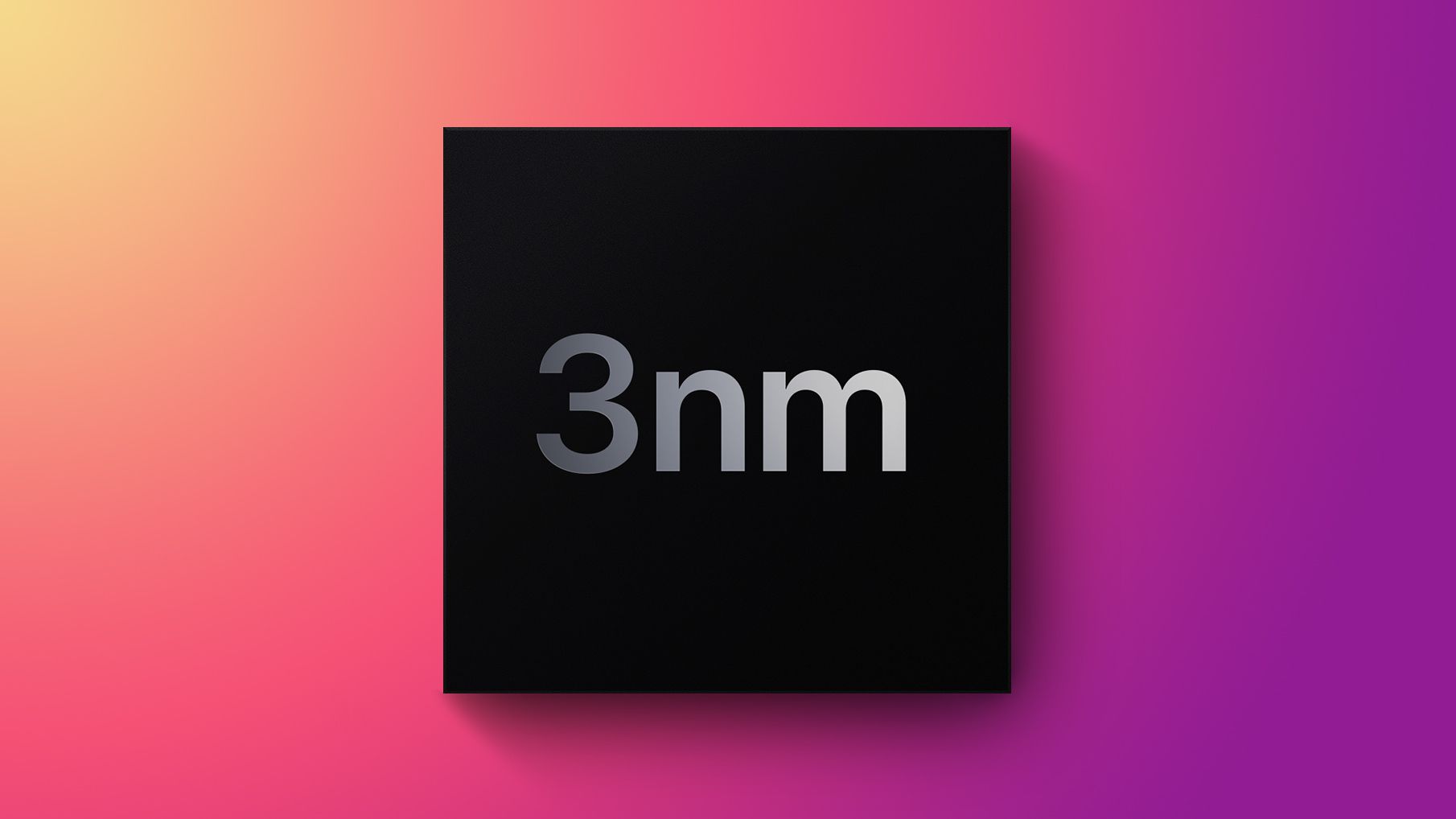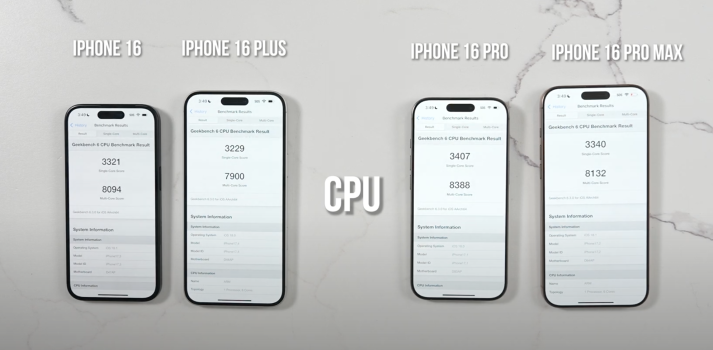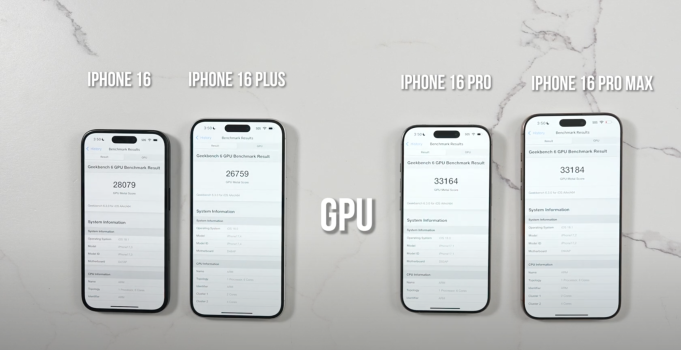Geekerwan interviews Johny Srouji on A18/M4
Got a tip for us?
Let us know
Become a MacRumors Supporter for $50/year with no ads, ability to filter front page stories, and private forums.
M4+ Chip Generation - Speculation Megathread [MERGED]
- Thread starter GoetzPhil
- Start date
- Sort by reaction score
You are using an out of date browser. It may not display this or other websites correctly.
You should upgrade or use an alternative browser.
You should upgrade or use an alternative browser.
I don’t see any obvious problems for the binned theory but I also think it could be something like the old M1/M2 Pro-Max relationship, two systems with the same design but one has additional GPU cores and more memory bandwidth. Seems like, if so, that should be visible.Yeah, I agree. We can’t know for sure yet. […]
On the other hand, the M3 Max has two tiers with different memory bandwidths, so there is precedent.
The M3 Max is the same SoC but only use 3 out of the 4 128-bit memory channels for the lower part, which also explains the weird memory size of 36GB (3 x 12GB on a 384-bit memory bus).I don’t see any obvious problems for the binned theory but I also think it could be something like the old M1/M2 Pro-Max relationship, two systems with the same design but one has additional GPU cores and more memory bandwidth. Seems like, if so, that should be visible.
On the other hand, the M3 Max has two tiers with different memory bandwidths, so there is precedent.
I don't believe that that's reasonably possible. The Pro/Max design worked because you could slice off an entire portion of the Max, leaving a working Pro, while *also* having a shape that allowed you to fit many more dice on a wafer. The differences we're talking about, between the A18 and A18Pro, are not large enough, nor easily segregated, such that that's likely to be feasible.I don’t see any obvious problems for the binned theory but I also think it could be something like the old M1/M2 Pro-Max relationship, two systems with the same design but one has additional GPU cores and more memory bandwidth. Seems like, if so, that should be visible.
Lorem ipsum dolor sit amet, consectetur adipiscing elit.
Last edited:
I think they're just mentioning that to highlight the artificial software differences between the regular and Pro phones. The Pro phone may be making use of part of the media engine that the regular model isn't making use of (because it's artificially software locked out of features like ProRAW or ProRes video recording), but that doesn't mean that part of the media engine is absent from the regular models. Sometimes Apple locks down those features to the Pro models at a system level, so you can't access them on 3rd party camera apps either (like ProRAW and ProRes), but that still doesn't mean it's not there in hardware.
I'm not saying that can't be the case, as it was the case between the M1 and M1 Pro with the M1 Pro having the ProRes engine, but those are much more obviously different chips than the A18 and A18 Pro are in terms of die area and the thermal capacity of the devices that they go into (even in cases of both tiers of chips going into the same chassis, the chassis either ends up being overbuilt for the base tier (in the case of the Mac mini) or the same chassis includes a separate, less capable cooling solution for it (base model M3 MacBook Pro has a single fan compared to 2 fans in the M3 Pro model). But in essence both tiers of chips are designed to go into way different devices than one another in terms of power draw and price.
Yes I wrote that later in that post:
I just wanted to say that not everything that they only mentioned in the A18 Pro might be unique on die to the Pro as opposed to the things they explicitly said differentiate the two. (And even then as @Confused-User said while I was typing this response, some of that might not even be a die difference or by the same token represent a fusing off, it depends!)
Sorry, I wasn’t being clear. I just meant the basic concept is similar: everything the same except the GPU element. And, if so, then the binned theory is wrong.I don't believe that that's reasonably possible. The Pro/Max design worked because you could slice off an entire portion of the Max, leaving a working Pro, while *also* having a shape that allowed you to fit many more dice on a wafer. The differences we're talking about, between the A18 and A18Pro, are not large enough, nor easily segregated, such that that's likely to be feasible.
I’ll admit I thought at first glance they were binned, and just sort of assumed that. But looking at the two GPU slides, I see now that Apple goes out of its way to show different GPU and GPU-adjacent structures, so, for me, that blows up the binned theory. They are doing different things in that area, while the rest of the SoC is the same.
Basically, the Pro gets the “desktop-class architecture” of the M4 GPU cores, while the non-Pro gets A18 GPU cores. They are similar, but not entirely the same.
Last edited:
In the same graphical app the iphones didnt throttle like the 14/15 models and sustain performance was about 24 minutes instead for 10-11 minutes in the prev generations
The peak temp was still 117F, but this time again, without throttling, this must be the first iphone that doesnt do that
The peak temp was still 117F, but this time again, without throttling, this must be the first iphone that doesnt do that
May I ask which review this information is from please?In the same graphical app the iphones didnt throttle like the 14/15 models and sustain performance was about 24 minutes instead for 10-11 minutes in the prev generations
The peak temp was still 117F, but this time again, without throttling, this must be the first iphone that doesnt do that
This is fascinating! I think it makes it much more likely that we really are looking at two different chips, though as we discussed a few days ago it's not definitive proof.Welp, it seems like the media engines might not be identical afterall:
H265 encode performance seems to be 2x faster on the iPhone 16 Pro.
It seems like when they talked about 2x faster encoding performance in the A18 Pro section of the keynote, they were strictly talking about the A18 Pro. So we know that at least that feature is exclusive to A18 Pro.
Edit: The picture didn't upload correctly, added it again
Huh ... really interesting. Evidence accumulating that it is a different SOC rather than a bin. I mean the die schematic for the two were different in the keynote but one never knows how literally to take those.So the A18 Pro has double the cache compared to the A18, both SLC and L2. Source: Geekerwan.
View attachment 2421176
View attachment 2421179
Indeed ... those are massively significant jumps in the NE and AI performance in general. Where did you get the table?Kind of interesting View attachment 2421250
Called it no 2nm chip till 2026There is no 2nm fab ready for mass production in 2025, it will be 2026 at the earliest if there is no unexpected delay (and I think there will be, because of China's ban on gallium and germanium).
M3 Late 2023/Early 2024 on N3 (3nm)
M4 Mid/Late 2025 on N3P (3nm+)
M5 Late 2026/Early 2027 on N2 (2nm) or N3X (3nm++) if there is production delay
Kuo: iPhone 17 to Use 3nm Chip Tech, iPhone 18 Pro Models to Use 2nm
Next year's iPhone 17 series will feature processors made using TSMC's enhanced N3P 3-nanometer chip technology, but only iPhone 18 Pro models in 2026 are likely to use the Taiwanese chipmaker's next-generation 2nm processor technology because of cost concerns, according to Apple analyst...
the only difference is they gonna use N3P twice for M4 & M5
Appears to be from a poster in the current Ming-Chi Kuo thread: https://forums.macrumors.com/thread...-use-2nm.2436993/?post=33414203#post-33414203Indeed ... those are massively significant jumps in the NE and AI performance in general. Where did you get the table?
Called it no 2nm chip till 2026

Kuo: iPhone 17 to Use 3nm Chip Tech, iPhone 18 Pro Models to Use 2nm
Next year's iPhone 17 series will feature processors made using TSMC's enhanced N3P 3-nanometer chip technology, but only iPhone 18 Pro models in 2026 are likely to use the Taiwanese chipmaker's next-generation 2nm processor technology because of cost concerns, according to Apple analyst...www.macrumors.com
the only difference is they gonna use N3P twice for M4 & M5
Isn’t M4 on N3E?
M3 Late 2023/Early 2024 on N3 (3nm)
M4 Mid/Late 2025 on N3P (3nm+)
M5 Late 2026/Early 2027 on N2 (2nm) or N3X (3nm++) if there is production delay
TSMC has always said "2H 2025" for the start of volume production for N2. There have not been any delays. That means September 2026 for the A-series SoC. M6 could launch earlier in the year, if Apple has a product they want to promote, like the iPad Pro this year, and the M2 MacBook Air in 2022.Called it no 2nm chip till 2026 [...] the only difference is they gonna use N3P twice for M4 & M5
At this point, assuming 2024 plays out as expected, this cadence is predictable, at least with respect to the two leading-edge "Pro" products: iPhone Pro and MacBook Pro. Probably also now the iPad Pro, but that won't be certain until we see if and when it gets M5.
I don't know when you made that prediction, I gather it was before news of N3E broke, so you can be forgiven for not including it as the second generation of 3nm. N3P is third-generation 3nm, and it will be the basis of A19/M5 in 2025. Those designs are going into production soon, in the next few months, if they haven't already.
Your prediction also kind of looks like you were accounting for an 18-month cadence, and at the time that was thought to be most likely, but now, today, it's abundantly clear that Apple will use an annual cadence for the M-series. So A20 Pro and M6 Pro/Max on N2 in September and October 2026 is a sure thing, or at least the only practical prediction to make.
N3X (or any other TSMC "X" node) will never be used for an Apple product, unless Apple starts making data-center server hardware, and even then it's doubtful they'd use it. It isn't designed for efficiency, only performance.
Last edited:
Or the encoder consists of two engines working together, as described in this patent:This is fascinating! I think it makes it much more likely that we really are looking at two different chips, though as we discussed a few days ago it's not definitive proof.
(2022) https://patents.google.com/patent/US20230102584A1 Systems and Methods for Multi-Core Image Encoding
Two engines gives you one more thing you can bin on to increase the yield of each wafer - if there's a flaw in either one GPU core, or some element of SLC/L2, OR now one of the encoder engines, you can still salvage the chip; just fuse out the elements that are working to bring it down to common A18 (nonPro) level.
It may not boost yield by much, but it's also a good segmentation point - the kinds of people who actually care about this functionality are willing to pay for it in a phone.
Can you run these again with GB AI 1.1? There seem to be a substantial number of changes in 1.1 to better use what the OS provides (not just on Apple, but also Windows and Android); probably based on feedback from developers in each camp.Kind of interesting View attachment 2421250
Wow ... unfortunately Geekbench AI does not yet have a search bar that I can see and all the first 100 pages of results on display are from the last few days, so I can't see if any other processors experienced a similar jump in performance from iOS17 to 18 or from Sonoma to Sequoia.Appears to be from a poster in the current Ming-Chi Kuo thread: https://forums.macrumors.com/thread...-use-2nm.2436993/?post=33414203#post-33414203
Register on MacRumors! This sidebar will go away, and you'll see fewer ads.




